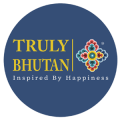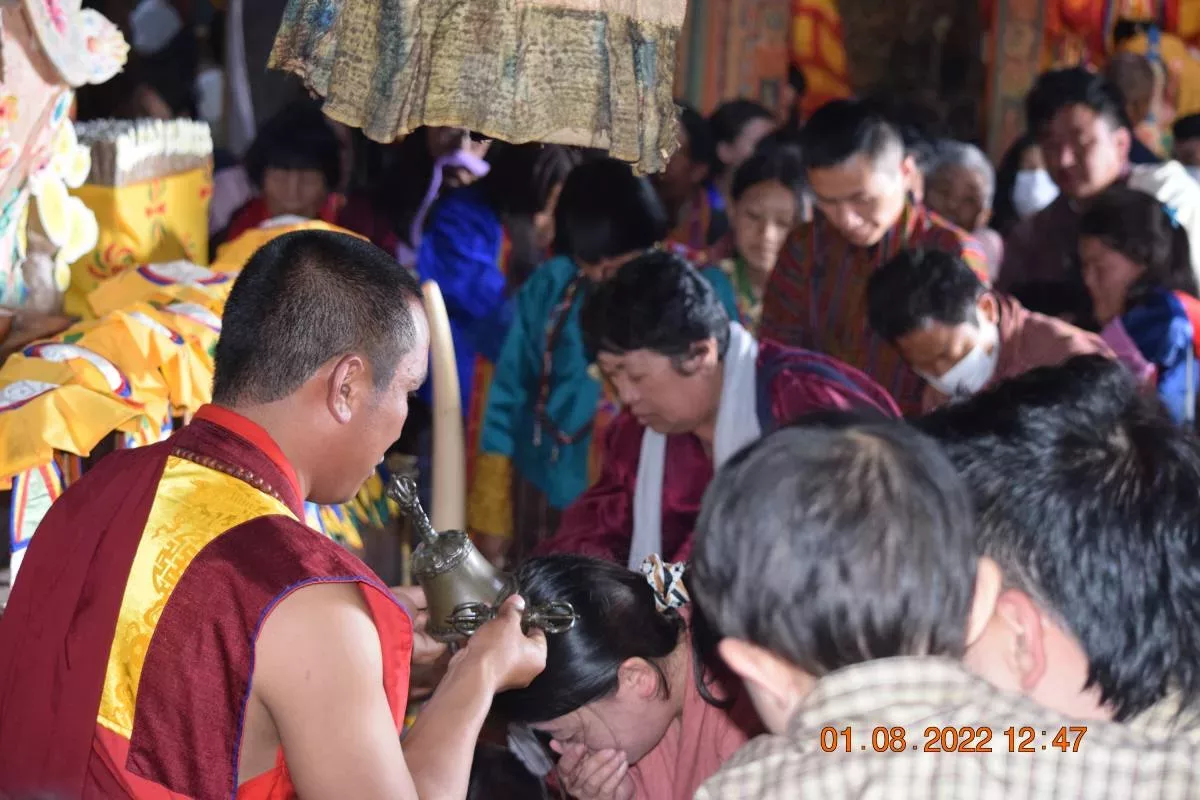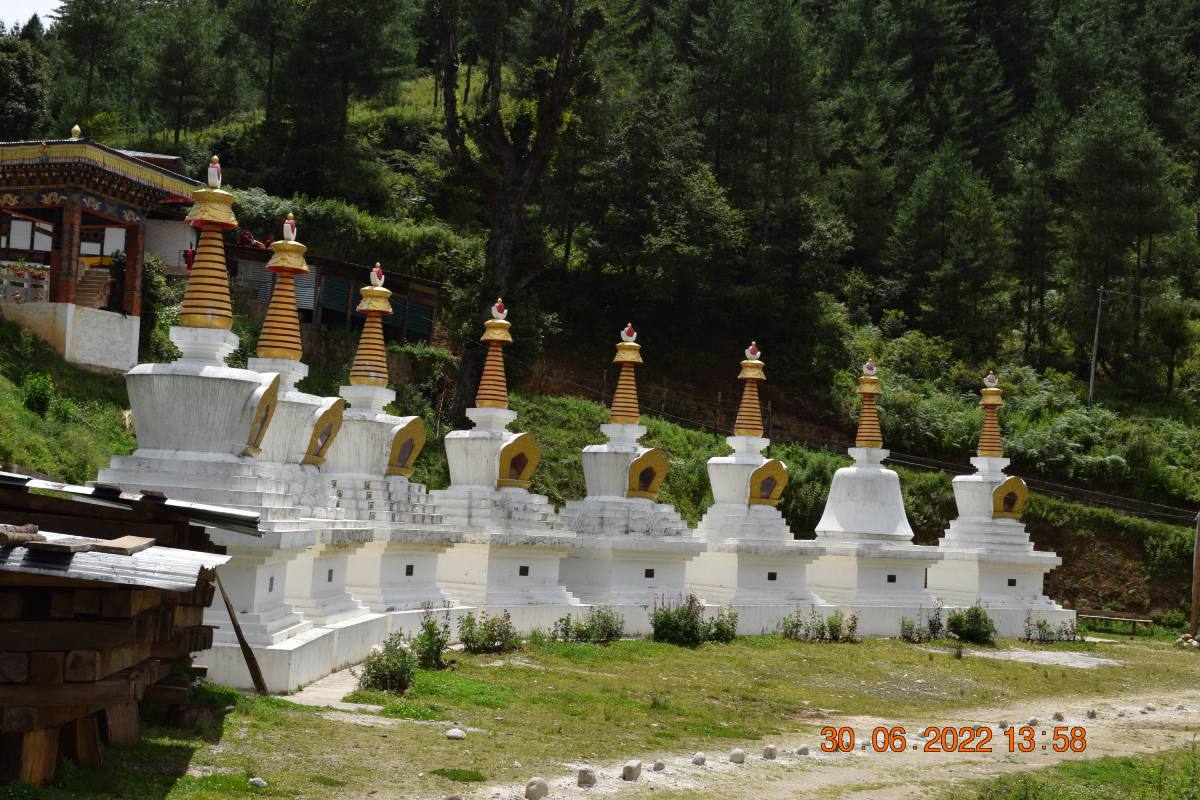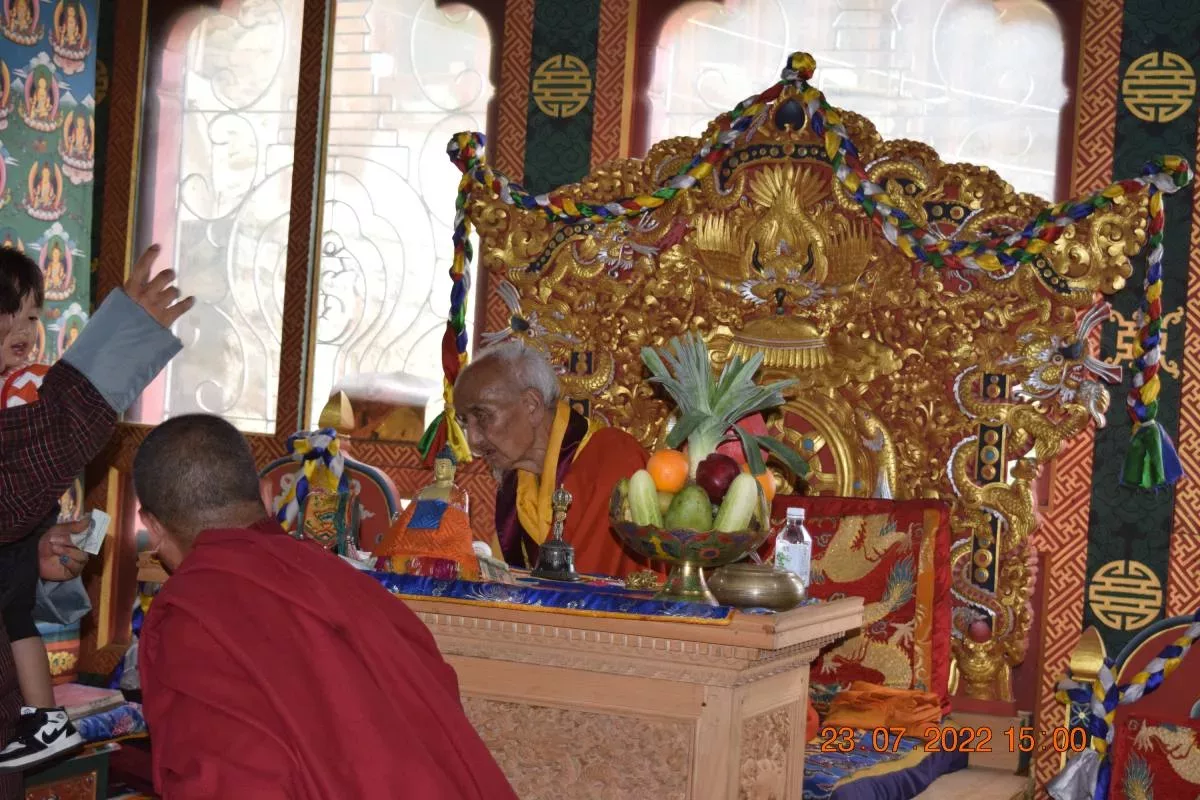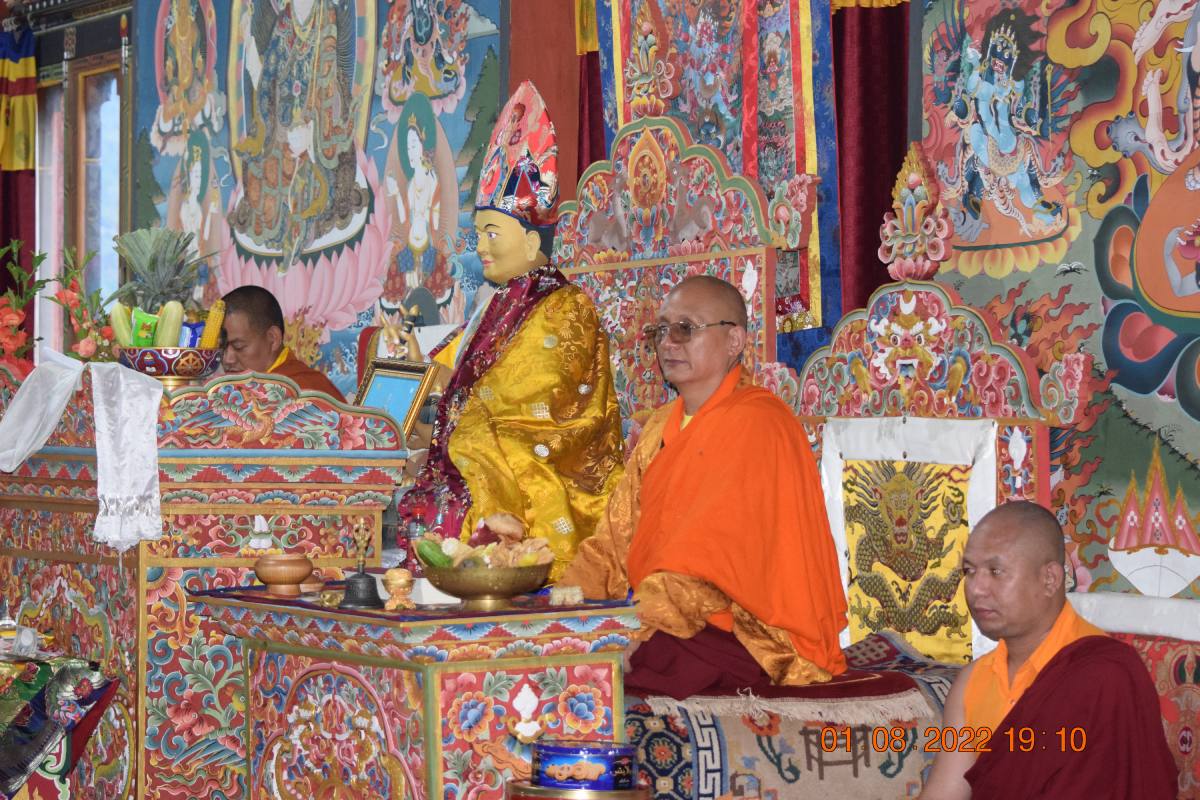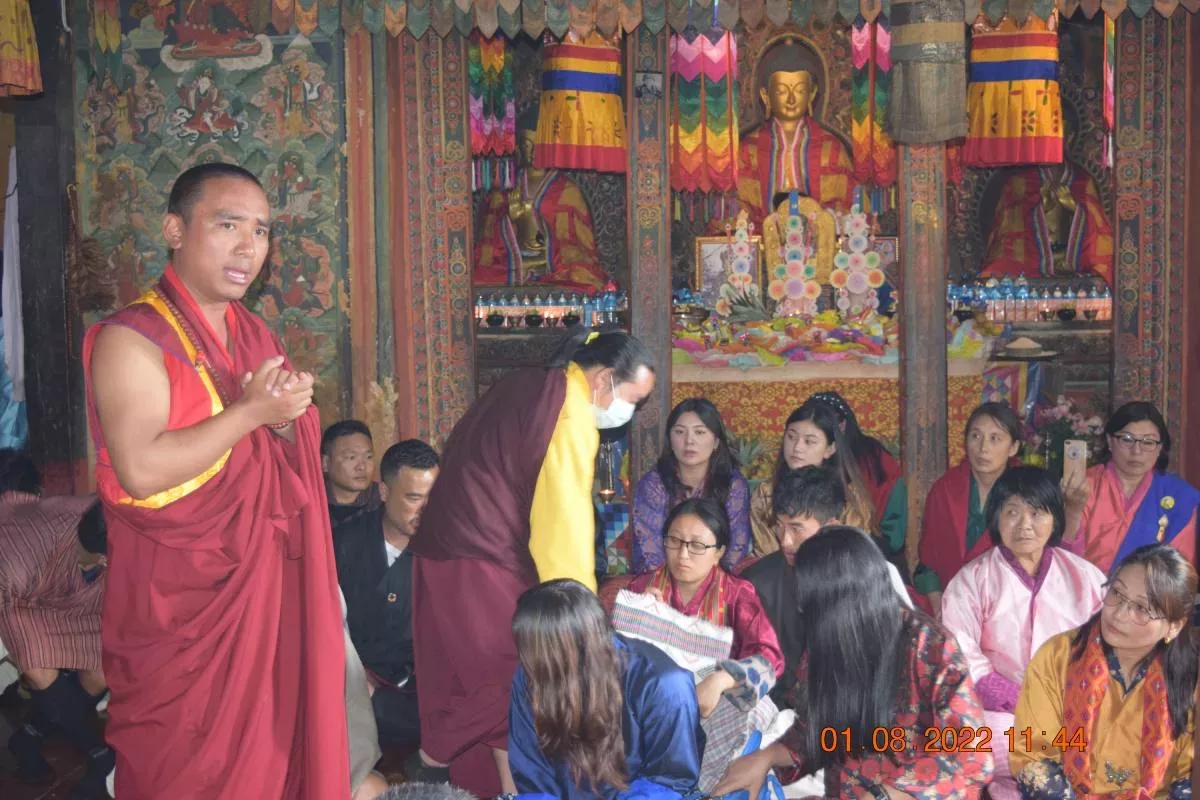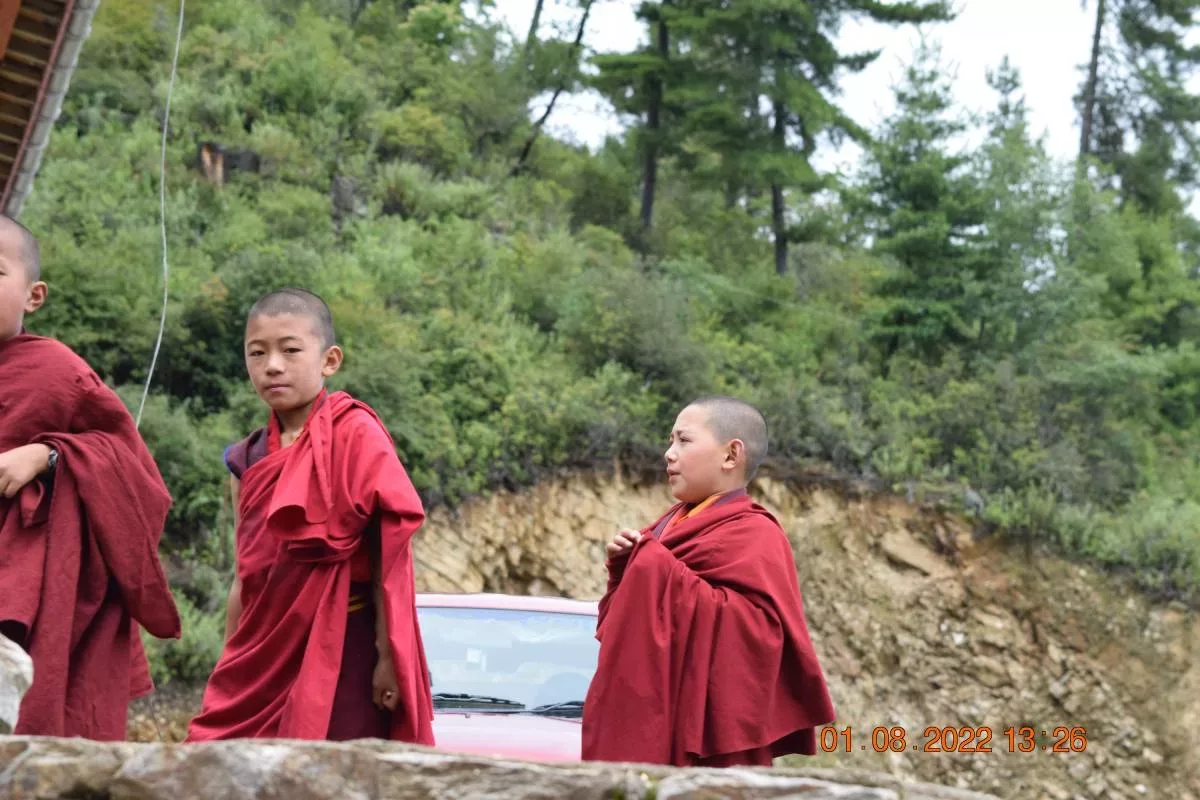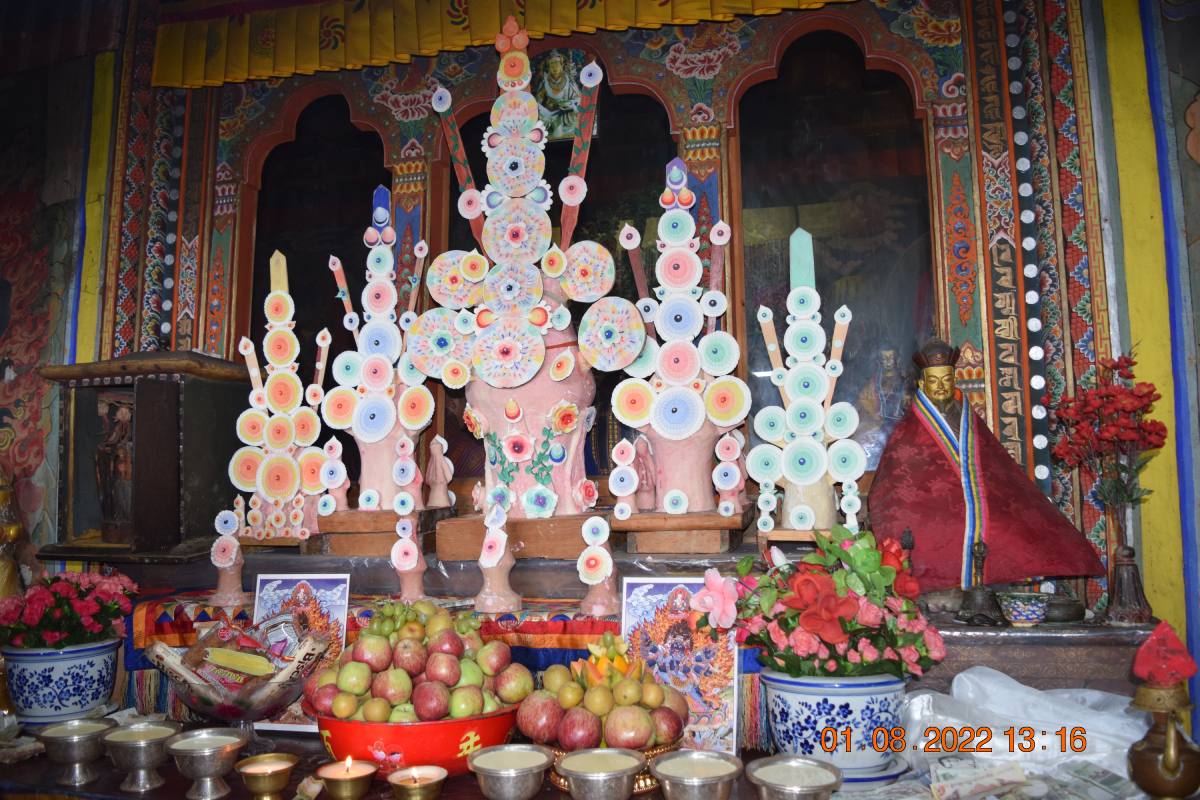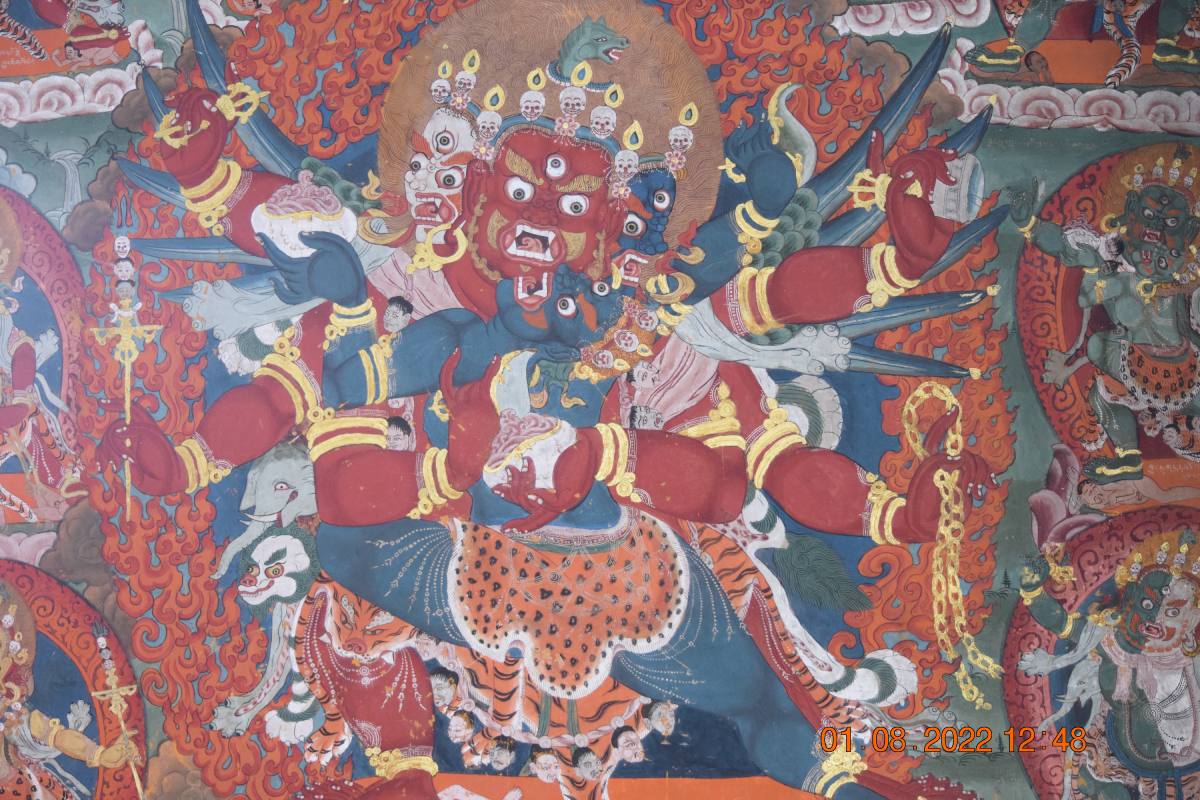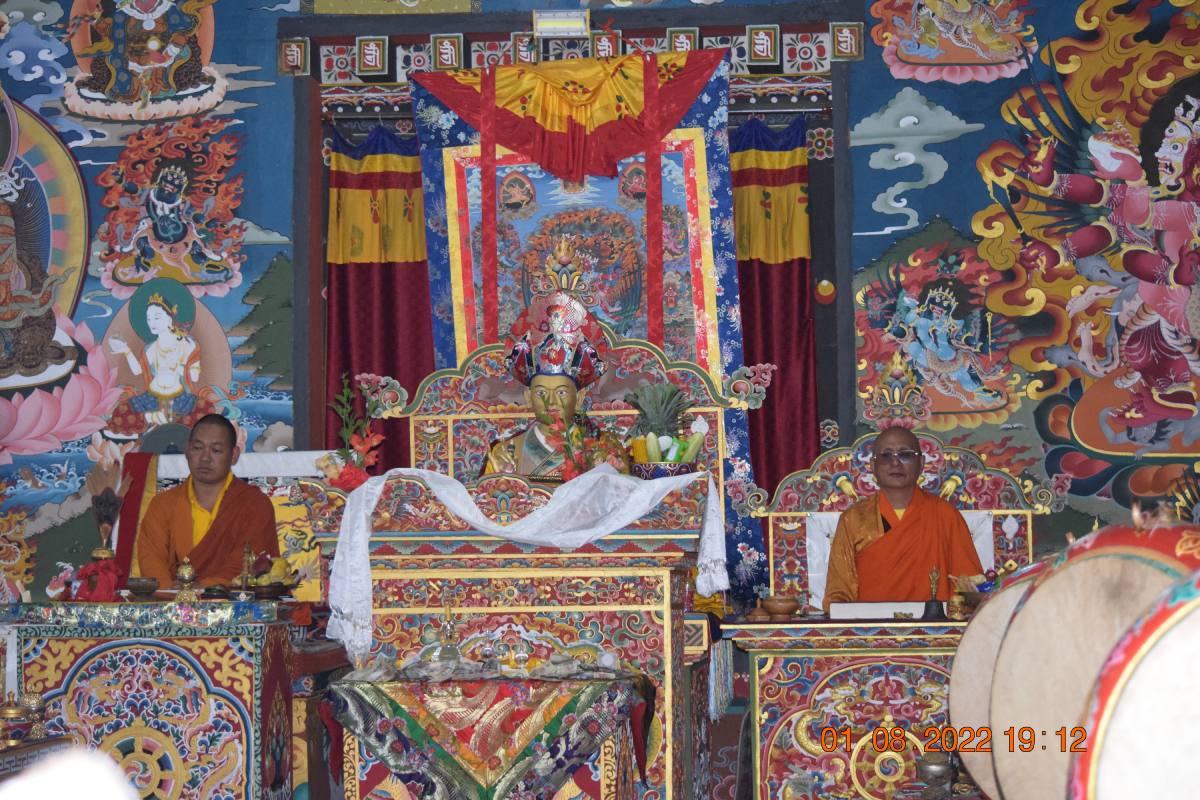Detailed Program
The flight is a good opportunity to get a panoramic view of the Eastern Himalayan mountain range (given the weather is clear). You will see the massive peaks of the eastern Himalayas, including Kanchenjunga, (the third highest mountain in the world) and Chomolhari, Bhutan’s holy mountain. To see the mountains, request left-hand side seats at the check-in counter. Drive straight to Thimphu – a 1-hour drive.
As the largest city – with a population of approximately 100,000 – Thimphu is Bhutan’s “Big Apple.” With the seat of the Royal Government, homes of the Royal Family, and main offices for international aid organizations located here, Thimphu is a mix of Himalayan and Western sensibilities.
Drive to Big Buddha – the biggest sitting Buddha statue with a panoramic view of Thimphu valley.
- 4:30 pm: Evening Yoga (1.5 hours of Gentle Flow) followed by Welcome Circle Introductions.
Places and attractions:
- Tashichho Dzong
- Semthoka Dzong
- Dochu La Pass
- Memorial Chorten
- Changangkha Lhakhang
- Zangdopelri
- The Tallest Buddha Image
- Tango And Cheri Monasteries
- The Handicrafts Emporium
- Traditional Medicine
- Zorig Chusum Institute
- National Library
- Weekend Market
- Botanical Garden
- Thadrak Goemba
- Tashigang Goemba
- Chizhing Samtencholing Lhakhang
Accommodation options:
- 6 am Morning Yoga (Vinyasa for 1.5 hours) and introduction to meditation (15 minutes), followed by an introduction to the retreat.
- 8 am: Breakfast
- 9:30 am: After breakfast drive to Dodena for a short day hike with packed lunch to Tango Monastery. Tango is situated on the northern outskirts of Thimphu. Tango is a premier Buddhist College as well as a retreat center for the monks.
Afternoon: Visit the Memorial Chorten (stupa) built in memory of the 3rd King. It is a social and spiritual place for Bhutanese to meet, gather and do spiritual practices.
- 6:30pm: Dinner
- 8 pm: Guided meditation and relaxation (30 minutes)
Places and attractions:
- Tashichho Dzong
- Semthoka Dzong
- Dochu La Pass
- Memorial Chorten
- Changangkha Lhakhang
- Zangdopelri
- The Tallest Buddha Image
- Tango And Cheri Monasteries
- The Handicrafts Emporium
- Traditional Medicine
- Zorig Chusum Institute
- National Library
- Weekend Market
- Botanical Garden
- Thadrak Goemba
- Tashigang Goemba
- Chizhing Samtencholing Lhakhang
Accommodation options:
- 6:30 am Morning Yoga – Fundamentals: Standing Asanas (1 hour 15 minutes) and meditation.
- 9 am: Breakfast
Visit the Royal Textile Museum and walk around the Craft Bazaar
After lunch, free afternoon to explore and walk around Thimphu town on your own – we will dedicate a meeting time and place for pick up afterward.
- 7 pm: Dinner at Hotel
- 8 pm: Reflections and Meditation (1 hour)
Places and attractions:
- Tashichho Dzong
- Semthoka Dzong
- Dochu La Pass
- Memorial Chorten
- Changangkha Lhakhang
- Zangdopelri
- The Tallest Buddha Image
- Tango And Cheri Monasteries
- The Handicrafts Emporium
- Traditional Medicine
- Zorig Chusum Institute
- National Library
- Weekend Market
- Botanical Garden
- Thadrak Goemba
- Tashigang Goemba
- Chizhing Samtencholing Lhakhang
Accommodation options:
- 6:30 am: Morning Yoga: Fundamentals: Forward Bend (1 hour 15 minutes) and meditation
- 9 am: Breakfast
Visit the Traditional Paper factory.
Walk over to the craft bazaar across the cantilevered bridge from the farmer’s market.
Lunch
Visit the Tashichhodzong.
- 5:30 pm: Dinner.
- 8 pm: Reflections and Meditation.
Places and attractions:
- Tashichho Dzong
- Semthoka Dzong
- Dochu La Pass
- Memorial Chorten
- Changangkha Lhakhang
- Zangdopelri
- The Tallest Buddha Image
- Tango And Cheri Monasteries
- The Handicrafts Emporium
- Traditional Medicine
- Zorig Chusum Institute
- National Library
- Weekend Market
- Botanical Garden
- Thadrak Goemba
- Tashigang Goemba
- Chizhing Samtencholing Lhakhang
Accommodation options:
- 6:30 am: Morning Yoga: Fundamentals: Backward Bends (1 Hour and 15 minutes) and meditation
- 9 am: Breakfast
After breakfast leave for Punakha (3 hours drive). Punakha is located at a much lower altitude, Punakha is warmer and used to be the old capital of Bhutan. It is still the winter capital for the Monastic Body – they shift from Thimphu to Punakha during winter.
On the way, you will see Simtokha Dzong, the oldest dzong built in Bhutan.
We continue east over the Dochula (la means pass). Here in Dochula, you will see the 108 chortens or stupas that were built by the Queen Mother for the peace and prosperity of Bhutan. From the summit, in good weather, 200 miles of snow-capped Himalayan peaks are visible.
You will also note a dramatic change in vegetation. Cactus, banana, poinsettia, and other semi-tropical plants dominate the landscape. After a few hours, we reach the green and gold terraced fields of Punakha.
Stop for lunch
Walk through rice paddies to visit the Chime Lhakhang – the temple of Lam Drukpa Kuenley, or the Divine Madman
- 5 pm: Yoga
- 7 pm: Dinner.
Places and attractions:
- Punakha Dzong
- Khamsum Yulley
- Talo Goenpa
- Nalanda Buddhist College
- Chorten Nyingpo Lhakhang
- Sangchen Dorji Lhuendrup
- Limukha Village
- Ritsha Village
Accommodation options:
- 6 am: Morning Yoga: Fundamentals: Inversions (1 hour 30 minutes) and meditation
- 9 am: Breakfast
Drive further to visit the magnificent Punakha Dzong. The Punakha valley is dominated by the impressive Punakha Dzong, which sits at the confluence of the Mo (female) and Po (male) rivers. Built by Zhabdrung in 1647, this massive dzong is one of the holiest in Bhutan. It houses some of the country’s most sacred relics, including Zhabdrung preserved remains.
After the Dzong visit, walk to the longest suspension bridge in Bhutan and meet the bus on another side of the river.
Lunch.
Rafting in the Punakha River.
- 5 pm: Jivamukti Yoga Open Class
- 7 pm: Dinner
Places and attractions:
- Punakha Dzong
- Khamsum Yulley
- Talo Goenpa
- Nalanda Buddhist College
- Chorten Nyingpo Lhakhang
- Sangchen Dorji Lhuendrup
- Limukha Village
- Ritsha Village
Accommodation options:
- 7 am: meditation
- 9 am: Breakfast
- 9:30 am: Drive up north of the Punakha valley to commence on a short hike to Khamsum Yuley Temple – built by the Queen Mother for the 5th King
Lunch.
Visit the Nunnery in Wolakha and practice individual meditation.
- 5:30 pm: Evening meditation and reflection (1 hour)
- 7 pm: Dinner at Hotel
Places and attractions:
- Punakha Dzong
- Khamsum Yulley
- Talo Goenpa
- Nalanda Buddhist College
- Chorten Nyingpo Lhakhang
- Sangchen Dorji Lhuendrup
- Limukha Village
- Ritsha Village
Accommodation options:
- 6 am: Morning Yoga: Open Vinyasa Flow (1 hour 30 minutes) and meditation
- 8 am: Breakfast
- 9:30 am: Leave for Paro – 5 hours drive
Lunch at Dochula Pass Restaurant
Continue to drive to Paro
- 5 pm: Evening Easy Flow Yoga
- 7 pm: Dinner at Hotel.
Places and attractions:
- Rinpung Dzong
- Drukgyel Dzong
- Taktshang
- Kyichu Lhakhang
- Kila Gompa
- Dungtse Lhakhang
- Tachog Lhakhang
- Dzongdrakha
Accommodation options:
- 6:30 am: Morning Yoga: Open Vinyasa Class (1 hour 30 minutes) and meditation
- 9 am: Breakfast
- 10 am Sightseeing In the Vicinity.
First half visit Rinpung Dzong. You will have to cross a traditional cantilever bridge called “Nemi Zampa” and a short walk uphill will take you to the doors of the Dzong. Inside the Dzong will be exploring the architectural layout of the temples inside. Bhutan’s dzongs originally served three purposes: as a fortress, an administrative center of local government, and a residence and focus for the monks’ religious activity.
Visit the Ta Dzong Museum – The national museum of Bhutan. Ta Dzong was historically used as the watchtower for Rinpung Dzong and therefore offers a panoramic view of Paro valley.
Lunch in Paro town
Groups switch – Hot Stone bath and Rinpung Dzong and Ta Museum
- 5pm: Evening Yoga
- 7pm: Dinner at Hotel
Places and attractions:
- Rinpung Dzong
- Drukgyel Dzong
- Taktshang
- Kyichu Lhakhang
- Kila Gompa
- Dungtse Lhakhang
- Tachog Lhakhang
- Dzongdrakha
Accommodation options:
- 6 am: Morning Yoga
- 8 am: Breakfast
- 9:45 am: After breakfast hike to one of the most important religious sites in Bhutan, Taktsang Lhakhang, known as Tiger’s Nest. This magical monastery clings to a vertical granite cliff 2000 feet above the valley floor. The legend of Taktsang dates back to 747 AD when Padmasambhava, in the wrathful form of Guru Dorji Drolo, is believed to have flown here on the back of a tiger to subdue the evil spirits of the region.
Tantric Buddhist mythology tells that the vanquished spirits were transformed into protectors of the dharma. One of them, Singye Samdrup, is recognized today as the guardian deity of Taktsang. After about an hour of rather steep hiking, you reach a small teahouse that has a wonderful panoramic view of the temple. If you are interested, it is possible to get a closer view by hiking for another hour (in each direction) to reach the temple.
Free afternoon to explore Paro town
- 7 pm: Dinner at Hotel
- 8 pm: Reflection and Meditation (1 hour)
Places and attractions:
- Rinpung Dzong
- Drukgyel Dzong
- Taktshang
- Kyichu Lhakhang
- Kila Gompa
- Dungtse Lhakhang
- Tachog Lhakhang
- Dzongdrakha
Accommodation options:
- 6:30 am: Morning Yoga: Open Vinyasa (1.5 hours) and meditation for 20 minutes
- 9 am: Breakfast
- 10 am Visit Kichu Lhakhang (temple)- One of the oldest and most sacred monasteries in Bhutan.
Lunch in town
Free afternoon
- 5 pm: Kirtan
- 7 pm: Farewell Dinner at the hotel.
Places and attractions:
- Rinpung Dzong
- Drukgyel Dzong
- Taktshang
- Kyichu Lhakhang
- Kila Gompa
- Dungtse Lhakhang
- Tachog Lhakhang
- Dzongdrakha
Accommodation options:
- 6:30 am: Morning Yoga: Open Vinyasa Class and closing circle
- 9 am: Breakfast
Departure.
FAQs on Bhutan Yoga Retreat
You will have a wide range of cuisines to choose from, including Bhutanese, Indian, Tibetan, Chinese, and Thai, as well as Continental. Bhutanese rice is the main staple diet, which is accompanied by the most popular dish, “Ema datshi,” which is made of chilies and cheese.
Bhutanese people eat a lot of meat and vegetables. Our partner hotels and restaurants are always aware of your eating habits and cater to your preferences. Even if you want to try Bhutanese, it is not as spicy as we are accustomed to
The official language of Bhutan is Dzongkha, though many other dialects are preserved in each region of the country. Because English is the official language of Bhutan, most Bhutanese people understand it.
There is only one Indian embassy in the country. The Netherlands, Kuwait, and Canada all have consulates here. International embassies are located in Delhi, India, Kathmandu, Nepal, and Bangkok, Thailand.
We do not require any screening to enter Bhutan, but for your safety in the region, please check the Centre for Disease Control website (www.cdc.gov/).
Bhutan’s currency is called Ngultrum. The value of Ngultrum is equivalent to the Indian rupee. You cannot purchase Ngultrum before traveling to Bhutan, but once there, you can easily exchange your currency for Ngultrum at banks or even at your hotel. Please visit www.bnb.bt to view the current exchange rates.
- Inclusion
- Exclusion
- Insurance
- Airport pick-up and drop-off by private vehicle.
- 3-star accommodation (4 & 5 stars may require an additional premium update).
- Bhutan visa fee – including all necessary processing
- Route Permit
- Three meals per day during your stay in Bhutan
- A licensed Bhutanese tour guide
- All land transportation by private vehicle
- Camping equipment and haulage for trekking tours
- Sightseeing as per itinerary
- Monuments entrance fees where applicable
- Drinking water
- All internal taxes and charges
- A sustainable development fee of $200. (This sustainable development fee goes towards free education, free healthcare, and poverty alleviation, along with the building of infrastructure.)
- Airfare & Travel Insurance
- Expenses of personal nature, Tips to guides and drivers
- Expenses occurred due to unavoidable events i.e. road wrecks, flight delays etc.
Package does not include insurance of any kinds, and that you are required to obtain separate coverage from your home country before your trip begins.
